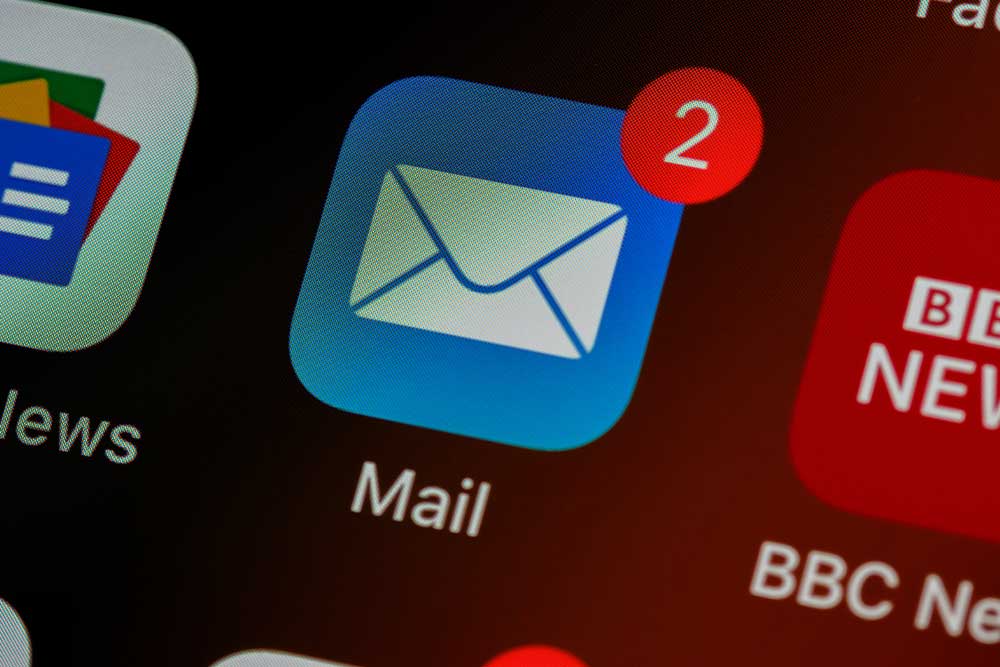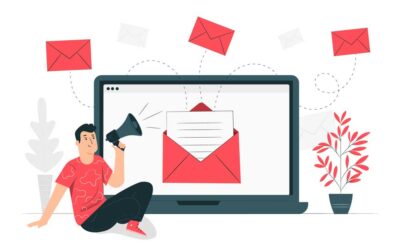What do you do with the newsletters you receive in your inbox? Do you send them to the trash bin or do you read them? If you subscribed to the sender, then that means you’re interested in the content and there’s a good chance you’ll click the email and read the email.
Whether you decide to read it now or later isn’t as important as the probability of you – the subscriber – clicking on the email and reading its content. Now, switch roles.
If your business emails the newsletter, you’ll feel more confident knowing your digital marketing strategy will gain traction from your email marketing campaign. In fact, there’s a 22% chance your email gets opened and read within the first hour that it’s sent.
Not impressed with 22%? You might if you consider that the engagement rate on a social media post is only 0.58%!
What Is A Newsletter?
A newsletter is a type of short-form content that’s packed with fresh, useful, and relevant information. Newsletters are created by a business and emailed to its subscribers on a monthly basis.
Email marketing uses different forms of content to deliver the message of a campaign such as cart abandonment and welcome emails. But the newsletter is widely regarded as the foundation of an effective email marketing campaign because people will always welcome useful information.
Newsletters are considered old-school tools of marketing. It’s been compared to the newspaper where people will only read the sections they want and discard the rest.
The comparison between newsletters and newspapers is flawed because of one reason. Unlike the newspaper which people just buy off the rack at a newsstand or delivered to their homes, a newsletter is targeted specifically at its reader.
A person who is interested in the business, its products, and its services will sign up for its monthly newsletter service.
That’s why, as we mentioned earlier, the newsletter is a type of short-form content – usually around 300 words – that’s packed with fresh, useful, and relevant information.
It won’t have sections on “entertainment”, “sports”, “cartoons”, and “politics”. The content of a newsletter is customized for its intended reader.
Your subscriber will only spend a few seconds going over your newsletter. He won’t be sifting through various topics because he has what he needs and what he wants to read about right in front of him.
What Are The Benefits Of A Newsletter For Your Business?
Having an email address is a must in work and life because emails are how your network directly connects with you about matters that are either work-related, confidential, or personal in nature.
For this reason, the number of email users continues to grow every year. In 2017, there were 3.7 billion email users. Today, there are an estimated 4.2 billion email users – more than half of the world’s 7.7 population!
Checking emails has become a popular daily activity. 99% of people with an email address, check their inboxes every day – some as often as 20 times a day.
That’s why emailing newsletters is an effective strategy. It’s sent directly to the inbox of the person who subscribed to it. Given that emails are checked multiple times a day, you can feel more assured of your subscriber coming across your content.
It comes down to the quality of your newsletter. What benefits can you expect from a newsletter for your business?
1. Lead Generation
On top of the list of benefits of creating newsletters for your business is that they help you generate leads. The people who sign up for your newsletter service become part of your email marketing list.
Remember, no one opts in or subscribes to your newsletter unless they are genuinely interested in your business and what you have to offer. Thus, your email marketing list is composed of very warm and highly qualified leads!
2. Build Your Brand
The biggest mistake that entrepreneurs make with their newsletters is to use them to sell their products and services. If it sounds counter-intuitive, it’s not.
Newsletters are more effective when they’re used to deliver high-value content. If they’re used to sell products and services aggressively, all the subscriber will read is “noise”. Eventually, he’ll unsubscribe.
Instead of creating sales content, share content that is informative, useful, and relevant to the needs of the subscriber. Give helpful tips or simple, easy-to-do hacks that make things more convenient and efficient for the reader.
3. Cultivate Strong, Long-lasting, and Sustainable Relationships
Are you pre-selling condominium spaces before they are sold to the public? Are you about to launch the latest mobile phone model? Is your restaurant planning to offer special discounts on select items on your anniversary date?
Offer these special promos and products to your subscribers before anyone else by announcing them via your newsletter. By doing so, you’ll make them feel special because you’re prioritizing them over the general public.
Give them enough time to decide about your offer. For example, if you’re pre-selling condominium spaces, keep the offer valid for up to 3 months. In contrast, for the latest mobile phone unit or special discounts on menu items, 1 week should be enough.

4. Email Marketing Has a High ROI
As mentioned earlier, there are more than 4 billion email users. People in social media come and go but more people will continue to sign up for email accounts. In fact, some of you might have more than 1 email account, right?
That’s why email marketing has a high Return on Investment (ROI). It doesn’t cost much to create a newsletter – it’s only 300 words or slightly over and people will always check their emails.
The ROI of email marketing is quite impressive. It’s been measured at US$36 for every US$1 spent.
5. Get Immediate Feedback From Your Customers
If you want to get immediate feedback from your customers about the quality of your products and services, send them a personalized email.
First, thank your subscriber/customer for choosing your brand. Then, get into the heart of the matter. Ask your subscriber/customer his opinions about the product or service he chose.
You’ll be surprised at the number of responses you’ll get. Whether the feedback is positive or negative, there are customers who are willing to take the time to express their opinions immediately.
How To Make Newsletters That Convert Interest Into Sales
Newsletter sign-ups aren’t automatic. A site visitor who comes across your opt-in box or Call-to-Action button won’t click on it right away and become a monthly subscriber. They’ll need a bit more prodding and convincing before they give you their email addresses.
Once you have subscribers, you have to maximize every opportunity you have to connect with them. You can’t just blindly create newsletter content without purpose and strategy and expect results.
Here are our tips on how to make newsletters that convert interest into sales. And it all starts with how your newsletter looks.
1. The Design of the Newsletter Should Entice the Recipient to Read It
There’s a reason why ad and marketing firms allocate money for product design. It’s because the initial attraction is always visual. It’s natural for a consumer to be attracted to a product that’s visually appealing.
The same goes for your newsletter. However, to come up with a design that’s appealing to your subscriber means you can’t follow a one-size-fits-all approach. You have to customize the design of your newsletter based on the type of industry and business.
For example, a subscriber from the world of finance would appreciate a newsletter design that’s more formal, business-like, and simple than someone from the restaurant industry.
We can design newsletters for your subscribers as well as create content. By outsourcing email marketing to Mountaintop Web Design, you can focus on the core functions of your business, while we use our expertise and experience to ensure the success of your newsletter campaign.
2. Customize Your Newsletter Content
Once you’ve built up a sizeable email list, the next step is to group your subscribers into segments.
Email segmentation helps you fine-tune your content marketing strategy. People who sign up for your newsletter service come from different industries. Likewise, they have different needs and intents.
Therefore, it doesn’t make sense to email the same content to everyone. You can segment your subscribers into different groups.
For example:
- Type of Industry
- Type of Business
- Professional Designation
- Preferred Types of Content
- Online Behavior/Frequency of Website Visits or Purchases
Creating content for each segment will take time but it will be time well spent because your subscriber will find greater value in your newsletter.
3. Give Your Subscriber a Reason to Click on Your Newsletter
If you see multiple emails in your Inbox, how do you decide which ones to open first and which ones to ignore? Chances are you would base your decisions on the subject lines of the emails.
The emails with subject lines that come across as urgent will be opened first. In contrast, emails with vague subject lines might be ignored or sent to the trash bin.
The subject line of your email newsletter plays an important role in the success of your campaign. How do you come up with subject lines that will entice the subscriber to read your newsletter?
- Personalize your subject line. An effective way to get your email clicked on is to include the name of your subscriber in the subject line. For example: “Jack, Here Are 5 Proven Ways To Sign Up Clients NOW”.
- Highlight the value of your newsletter. How will your newsletter address the present concern of your subscriber? Review the example of our subject line above. It comes across as urgent and has high value.
- Keep it short. What’s it about? People don’t want to spend too much time filtering emails. Get to the point. The subject line shouldn’t be more than 30 characters long.
4. Consistently Produce High-Quality Content
Newsletters are effective because they don’t take long to read. Most newsletters have fewer than 300 words. While short in terms of word count, you still have to assure your subscribers of the quality of its content.
- Put in the research. Only use reputable sites as references.
- Write in a simple, easy-to-read, and conversational manner.
- Make sure there are no errors in spelling or grammar.
- Organize your content properly.
- Keep your sentences and paragraphs short.
You don’t have to send out newsletters every week. In most cases, emailing newsletters once a month is enough to give you good results – if it consistently offers high-quality information.
As long as your content remains fresh, useful, and relevant your subscribers will continue to click on your email.
Conclusion
Before you start writing newsletters, you have to make sure that processes are in place to support the campaign.
Your digital marketing game must be on point to drive more traffic to your website. Keep an active online presence by posting content on various channels regularly. Engage with your followers and customers through chat and social media. And lastly, make sure your business continues to provide excellent goods and services to your market.
In other words, make it easier for your audience to want to subscribe to your newsletter.
We can help you get started in your email newsletter campaign. From lead generation to content creation, we’ll take care of what needs to be done while you focus on your business.
Give us a call or drop us an email. We’ll give you a free 30-minute consultation to find out the best approach for your newsletter campaign.
And if you enjoyed this article, feel free to share it with your community.






